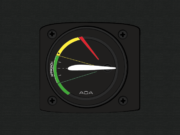The U.S. Federal Aviation Administration (FAA) is cautioning aircraft operators about the potential for damage to angle-of-attack (AOA) sensors during routine aircraft operations and emphasizing the importance of performing all proper maintenance tasks on the sensors to avoid subsequent malfunctions.
The FAA issued Information for Operators (InFO) 19009 last week, saying the document was intended to “inform aircraft operators of the potential for AOA sensors to be damaged during the course of normal operations.”
The agency noted “continued airworthiness activity” involving AOA sensors on a number of aircraft, from small general aviation airplanes to large transport airplanes, including the Boeing 737 MAX, grounded in March after two fatal crashes.
Accident investigators expressed concern that the sensors might have provided incorrect information to aircraft systems in the Oct. 29, 2018, crash of Lion Air Flight 610 after takeoff from Jakarta, Indonesia, and the March 10, 2019, crash of Ethiopian Airlines Flight 302 after takeoff from Addis Ababa, Ethiopia. The crashes killed all passengers and crewmembers in both airplanes — 346 people — and destroyed the airplanes. Both accident investigations are continuing.
InFO 19009 recommended that aircraft operators, maintenance providers and others “should review current procedures identified in their appropriate operational, maintenance or servicing manuals” to ensure that the manuals provide adequate information on the appropriate policies and procedures involving AOA sensors.
“It is imperative that all operators are aware of the criticality of AOA sensors and the potential for damage during normal operations, maintenance procedures, servicing procedures and any other procedures around an aircraft where damage to an AOA could occur,” the FAA said.
AOA sensors measure the amount of lift generated by an airplane’s wings, providing pilots with information about whether the airplane might enter an aerodynamic stall because of insufficient lift.

